Silk Wrap Nails: Unveiling the Secret to Durable Elegance
Discover the allure of silk wrap nails, an innovative technique that combines strength and style. Go through our expert guide to get elegant and durable nails.
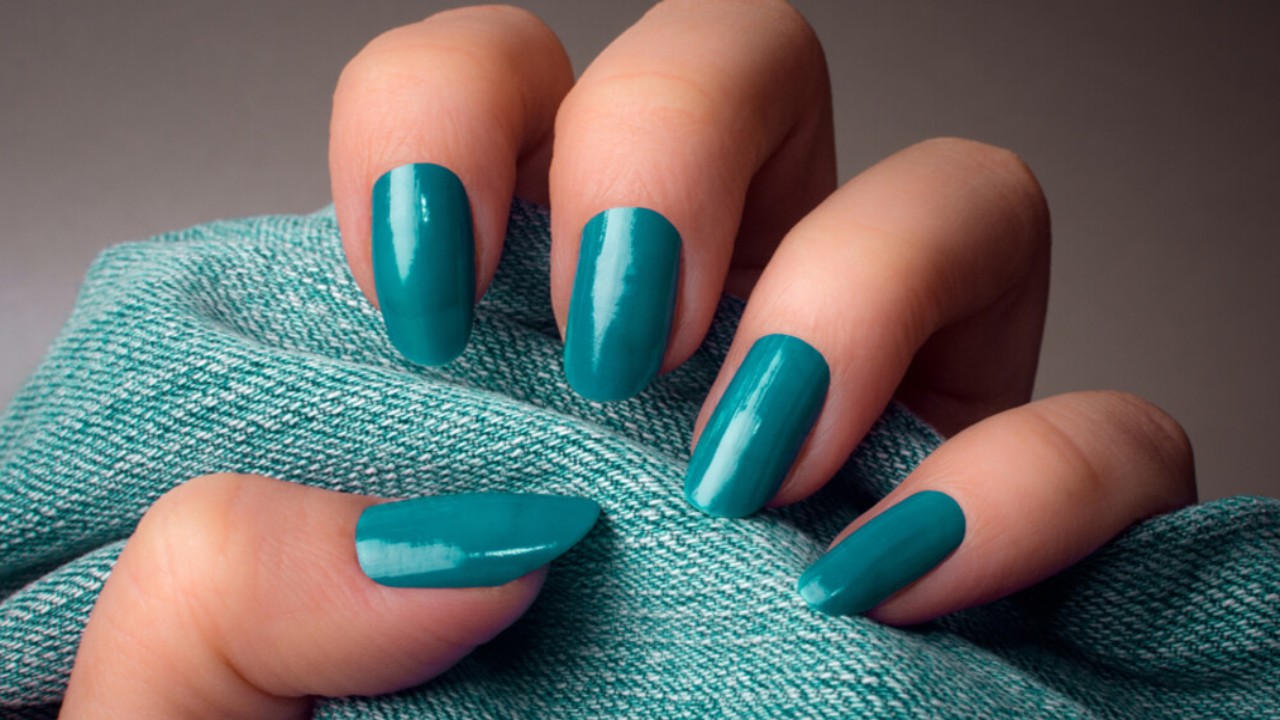
Welcome to the world of silk wrap nails, where durability meets elegance in manicures. Whether you're tired of frequent chipping nails or are simply seeking a sophisticated nail enhancement, silk wrap nails offer the perfect solution. Silk wrap nails are a popular technique that reinforces and protects your natural nails while providing a flawless canvas for stunning designs. What sets silk wrap nails apart is their ability to strike the ideal balance between strength and aesthetics. The silk or fiberglass material used in the process is incredibly lightweight, ensuring a natural look and feel. This means you can enjoy beautifully shaped and polished nails without the bulkiness often associated with other artificial nail enhancements.
In this comprehensive guide, we'll explore the benefits of silk wrap nails, the step-by-step application process, and maintenance tips. Prepare to unlock the secret to long-lasting, chip-resistant manicures that exude elegance and leave a lasting impression. Get ready to embrace the world of silk wrap nails and elevate your nail game!
What Are Silk Wrap Nails?

Silk wrap nails refer to a technique used in manicures to reinforce and protect natural nails. They involve the application of a thin layer of silk or fiberglass fabric to the nail bed, creating a durable and flexible barrier. This process strengthens the nails, making them less prone to breakage and promoting healthier growth. The silk or fiberglass material used in silk-wrap nails is incredibly lightweight and offers a natural look and feel. Unlike traditional artificial nail extensions, silk wraps provide a more subtle and refined appearance without adding excessive bulk.
Benefits of Silk Wraps for Nails

Silk wraps for nails offer numerous benefits that make them a popular choice among individuals seeking strong, beautiful, and long-lasting manicures. Here are some key advantages of using silk wraps:
- Strength And Durability: Silk wraps provide an added layer of strength and durability to natural nails. The silk or fiberglass material reinforces the nails, making them less prone to breakage, splitting, or peeling. This is especially beneficial for individuals with weak or brittle nails.
- Natural Look And Feel: Unlike traditional artificial nail extensions, silk wraps are incredibly lightweight and offer a more natural look and feel. They blend seamlessly with your natural nails, providing a subtle and refined appearance. The thin and flexible nature of silk wraps ensures a comfortable experience.

- Customizable Nail Shape: Silk wraps can be tailored to your desired nail shape. Whether you prefer square, round, oval, or any other shape, the fabric can be easily trimmed and shaped accordingly. This allows you to achieve the perfect nail shape that suits your style.
- Versatile Design Options: Silk wraps provide a foundation for various nail designs. They can be left as a simple, polished look or as a base for intricate nail art. The smooth surface of silk wraps allows for easy application of nail polish, gel, or other decorative elements.

- Longevity: Silk wraps offer exceptional longevity compared to traditional manicures. With proper care and maintenance, silk wrap nails can last several weeks without chipping or lifting. This makes them an ideal choice for those seeking a low-maintenance manicure option.
- Nail Health: Silk wraps promote nail health by protecting the natural nails and allowing them to grow without hindrance. The barrier created by the silk or fiberglass material helps prevent external damage and strengthens the nails over time.
Overall, silk wraps for nails provide a winning combination of strength, durability, natural appearance, and design versatility. Whether you want to enhance the health of your natural nails or achieve flawless manicures that last, silk wraps offer a reliable and elegant solution.
Disadvantages of Silk Wraps for Nails

While silk wraps for nails offer numerous benefits, it's essential to consider potential disadvantages as well. Here are a few drawbacks associated with silk wraps:
- Professional Application Required: Applying silk wraps to nails often requires professional expertise. Achieving proper adhesion and ensuring the wraps are correctly placed and bonded may be challenging for beginners. You may need to visit a nail technician or salon for the initial application and maintenance, which can add to the overall cost.
- Time-consuming Application Process: Compared to regular nail polish applications, silk wraps are more time-consuming. The preparation, cutting, bonding, and shaping of the fabric can be time-intensive. If you prefer quick and efficient manicures, silk wraps may not be the most convenient option.

- Limited DIY Options: While some individuals may attempt to apply silk wraps themselves, it can be not easy to achieve professional-quality results without proper training and experience. DIY applications may result in improper adhesion, bulges, or lifting, which can affect the durability and appearance of the manicure.
- Potential Allergic Reactions: Some individuals may experience allergic reactions to the adhesive or resin used in the silk wrap process. It is essential to check for any allergies or sensitivities to the materials before undergoing the application. Patch tests or consulting with a dermatologist can help determine any potential risks.

- Removal Process: Removing silk wraps can be a delicate process to avoid damaging the natural nails. It typically involves soaking the nails in acetone or a specialized remover, which can be time-consuming and may require professional assistance. The removal process may weaken the nails temporarily, requiring additional care and maintenance afterward.
- Expense: Silk wrap nail services can be more costly than regular manicures or applying nail polish at home. The initial application, maintenance, and removal may involve additional fees. It's essential to consider the financial aspect when opting for silk wraps.
While these disadvantages exist, many individuals still find the benefits of silk wraps outweigh the drawbacks. It's crucial to weigh your personal preferences, nail health, and lifestyle before deciding if silk wraps are the right choice for you.
Silk Wrap Nails Vs. Acrylic Nails
Silk wrap nails and acrylic nails are two popular options for nail enhancements, each with its characteristics and benefits. Let's compare the two:

- Material: Silk wrap nails involve the application of a thin layer of silk or fiberglass fabric. In contrast, acrylic nails are created by mixing a liquid monomer with a powder polymer to form a thick paste that hardens during air exposure.
- Look And Feel: Silk wraps offer a more natural and lightweight feel than acrylic nails, which can sometimes feel thicker and heavier due to the acrylic material. Silk wraps blend seamlessly with natural nails, providing a subtle and refined appearance, while acrylic nails often have a more noticeable artificial look.
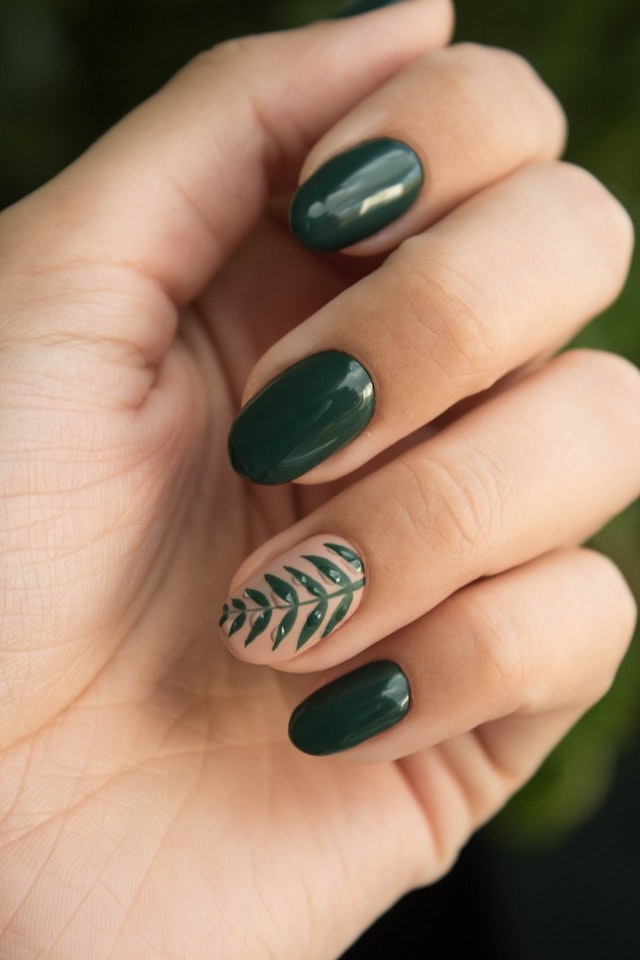
- Strength And Durability: Both silk wraps and acrylic nails provide added strength to natural nails. However, acrylic nails are generally considered stronger and more durable, making them suitable for individuals with weak or brittle nails who require extra reinforcement. Silk wraps are still resilient but may be more prone to chipping or lifting.
- Application Process: Silk wraps often require professional application due to the precision needed to cut, bond, and shape the fabric. On the other hand, acrylic nails are typically applied by mixing the liquid monomer and powder polymer directly on the nails, allowing for greater control over the shape and length. Acrylic nails are often sculpted or extended using forms or nail tips.

- Maintenance And Fills: Both silk wraps and acrylic nails require maintenance to keep them looking their best. Silk wraps may need infrequent touch-ups or repairs to fix any chips or lifting. Acrylic nails require regular fills to address the natural nail growth and maintain the desired length. Fills for acrylic nails are typically required every two to three weeks.
- Removal Process: Removing silk wraps usually involves soaking the nails in acetone or a specialized remover to loosen the adhesive and gently peel off the fabric. Acrylic nails, however, require filing or drilling down the artificial material until the natural nail is exposed. This process can be more time-consuming and may require professional assistance.
Ultimately, the choice between silk wrap nails and acrylic nails depends on your preferences, nail condition, and desired aesthetic. If you prioritize a natural look and feel with added strength and minimal thickness, silk wraps may be the preferred option. However, if you seek maximum durability, length, and versatility in shaping, acrylic nails may be more suitable. It's recommended to consult with a professional nail technician to determine which option best suits your needs.
Silk Wrap Nails Vs. Gel Nails

When considering silk wrap and gel nails as options for nail enhancements, it's essential to understand their characteristics and compare their features. Here's a comparison between the two:
- Material: Silk wrap nails involve the application of a thin layer of silk or fiberglass fabric, whereas gel nails are created by applying layers of a gel-like substance that hardens under a UV or LED lamp.
- Appearance And Natural Look: Silk wrap and gel nails offer a natural-looking finish. Silk wraps provide a subtle and refined appearance, blending seamlessly with natural nails. Gel nails also provide a natural look and can be customized with various colors, finishes, and designs.
- Thickness And Weight: Silk wraps are generally thinner and lighter than gel nails. The fabric used in silk wraps is lightweight, allowing for a more comfortable and natural feel. Gel nails can be built up in thickness depending on the desired look and may feel slightly thicker on the nails.
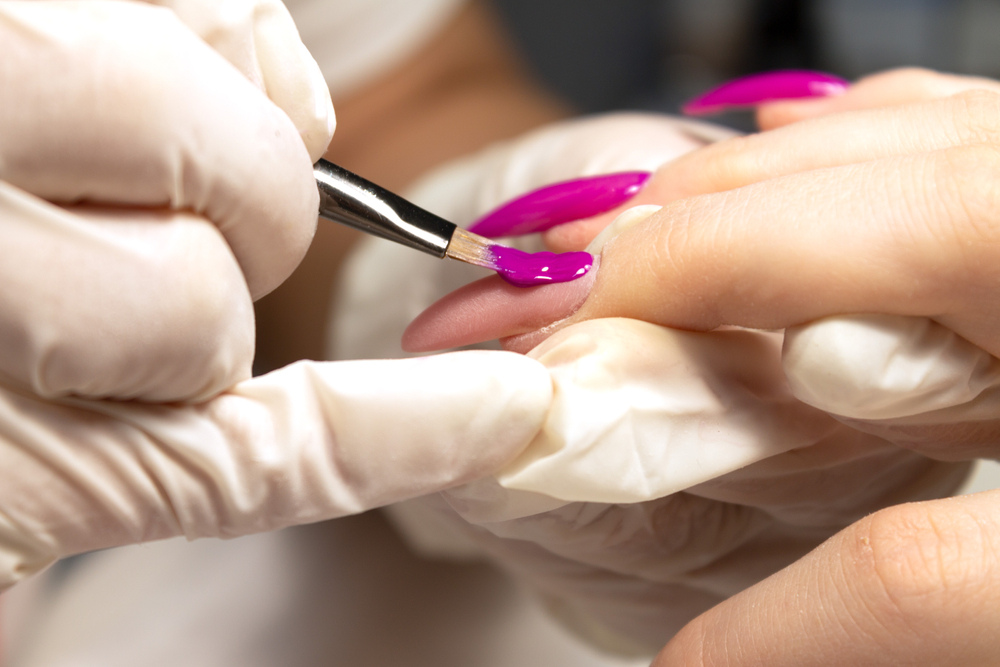
- Strength And Durability: Both silk wraps and gel nails provide added strength to natural nails. However, gel nails are generally known for their durability and resilience. They are less prone to chipping or lifting compared to silk wraps. Gel nails can withstand daily activities and maintain their glossy finish for an extended period.
- Application Process: Silk wraps often require professional application due to the precision needed to cut, bond, and shape the fabric. Gel nails are typically applied by a nail technician who uses layers of gel polish onto the nails and cures them under a UV or LED lamp. This allows for greater control over the shape, length, and customization.
- Maintenance And Removal: Silk wraps may require infrequent touch-ups or repairs if there are any chips or lifting. Gel nails generally require regular maintenance, including filling or refreshing the gel polish every two to three weeks as the natural nails grow. Removing silk wraps involves soaking the nails in acetone or a specialized remover, while gel nails require gentle filing or soaking in acetone to break down the gel layers.
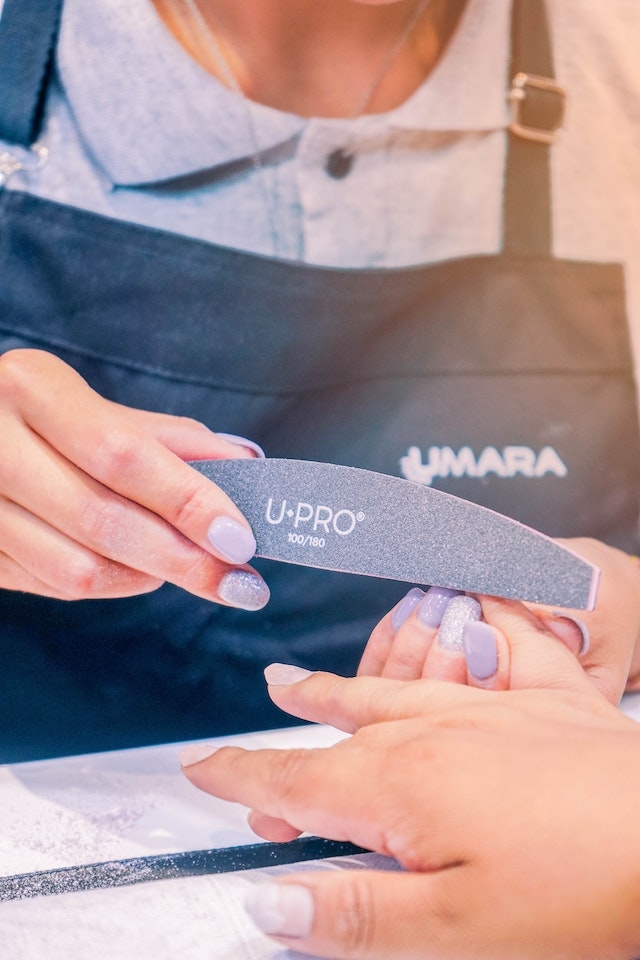
Ultimately, choosing silk wrap nails and gel nails depends on your preferences, nail condition, and desired longevity. If you prefer a lightweight and natural feel with some reinforcement, silk wraps may be suitable. If you want long-lasting, durable nails with customizable colors and designs, gel nails could be the better option.
Silk Wrap Nails Vs. Dip Powder Nails
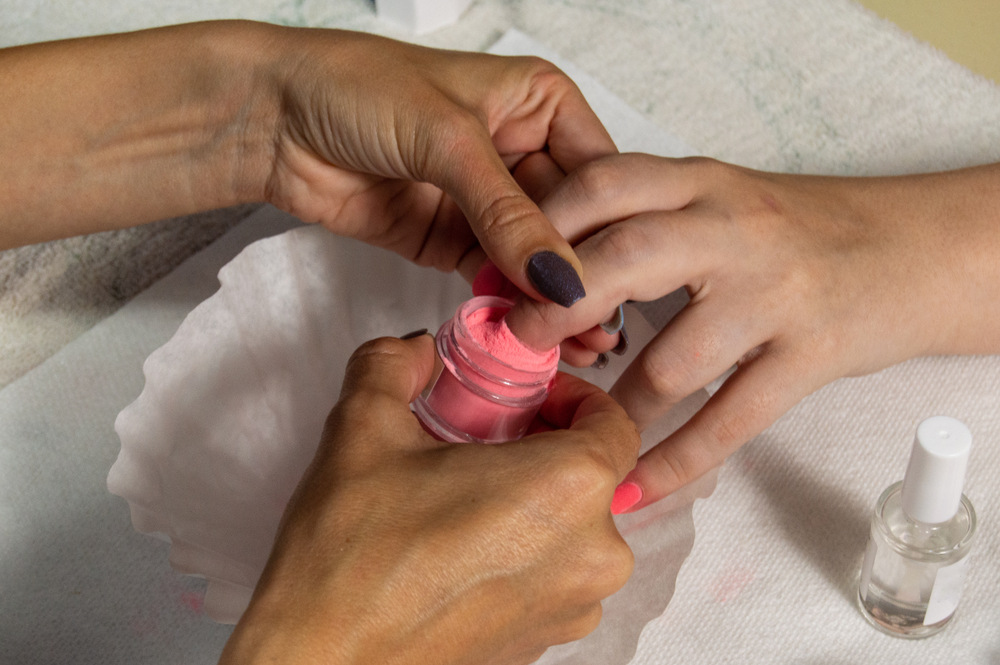
When considering silk wrap nails and dip powder nails as options for nail enhancements, it's helpful to compare their characteristics and features. Here's a comparison between the two:
- Material: Silk wrap nails involve the application of a thin layer of silk or fiberglass fabric, while dip powder nails involve dipping the nails into a colored powder and sealing it with a protective topcoat.
- Application Process: Silk wrap nails usually require a professional application involving the precise cutting, bonding, and shaping of the fabric. Dip powder nails can be applied both professionally and as a DIY option. The process involves using a base coat, dipping the nails into the powder, brushing off excess powder, and sealing with a topcoat.
- Strength And Durability: Both silk wraps and dip powder nails provide added strength to natural nails. However, dip powder nails are generally known for their durability and resistance to chipping. The dip powder creates a sturdy and long-lasting coating that can withstand everyday activities.

- Appearance And Thickness: Silk wraps offer a more natural and lightweight build. They provide a subtle and refined look without adding excessive thickness to the nails. Dip powder nails can create a thicker and more pronounced look, depending on the number of layers applied during the process.
- Versatility: Dip powder nails offer a wide range of color options and finishes, allowing for greater customization and creativity in nail designs. Silk wraps can be painted with regular nail polish or gel polish, but the design options may be slightly limited compared to dip powder nails.
- Maintenance And Removal: Silk wraps may require infrequent touch-ups or repairs if there are any chips or lifting. Dip powder nails generally require maintenance every two to three weeks, including filling the regrowth area and refreshing the color. Removing silk wraps involves soaking the nails in acetone or a specialized remover, while dip powder nails require soaking in acetone to break down the powder layers.
It's essential to consider your preferences, desired nail look, and maintenance routine when choosing between silk-wrap nails and dip powder nails. If you prefer a lightweight and natural feel with added reinforcement, silk wraps may be suitable. If you desire long-lasting and chip-resistant nails with a wide range of color options, dip powder nails could be the better choice.
How Is Silk Wrapping Applied?

Silk wrapping is a technique used to reinforce and protect natural nails. Here's a step-by-step guide on how silk wrapping is typically applied:
- Step 1: Nail Preparation- Start by preparing the natural nails. Remove any existing polish or debris and ensure the nails are clean and dry. Gently file and shape the nails to your desired length and shape.
- Step 2: Cut the Silk- Measure and cut pieces of silk or fiberglass fabric to fit each nail. The material should be slightly larger than the nail surface for a proper bond.
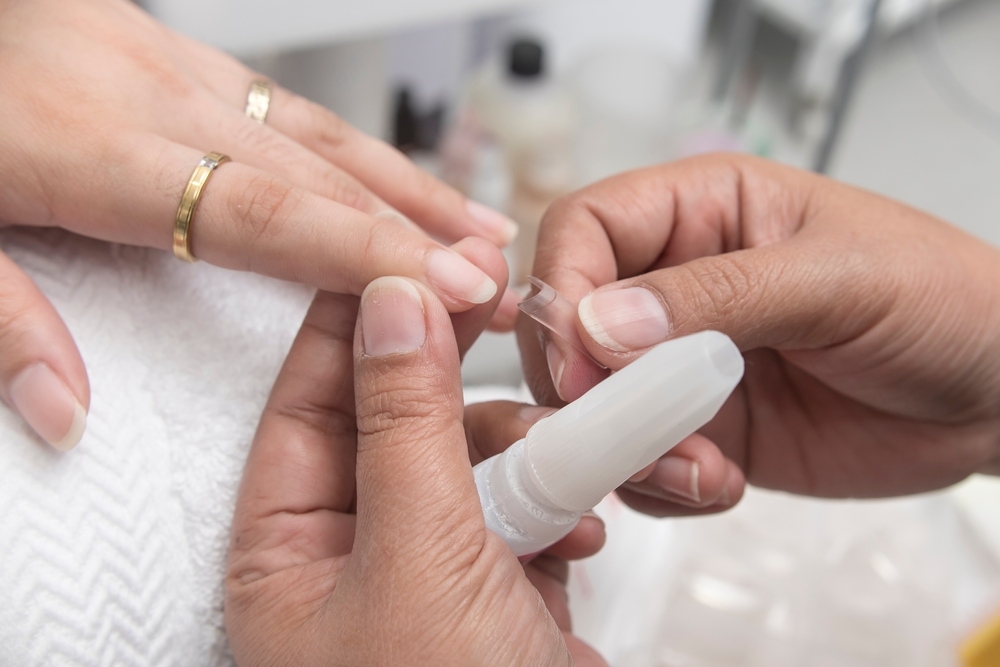
- Step 3:Apply Adhesive- Apply a thin layer of specialized resin or adhesive to the entire nail surface. Be sure to cover the whole area where the fabric will be applied. Avoid getting the glue on the surrounding skin.
- Step 4: Place the Silk-Carefully place the cut silk or fiberglass fabric onto the adhesive while it's still wet. Start from the base of the nail, align the material with the cuticle area, and gently press it down, working towards the tip of the nail. Smooth out bubbles to ensure a secure bond.

- Step 5: Bond the Fabric- Use a gentle, tapping motion to press the fabric onto the nail surface, ensuring it adheres evenly. Pay extra attention to the edges and corners of the material to ensure they are securely bonded to the nail.
- Step 6: Trim Excess Fabric- Once the fabric is fully bonded, use scissors or a nail clipper to trim any excess fabric extending beyond the nail tip. Be careful not to cut too close to the nail edge to avoid lifting or weakening the material.
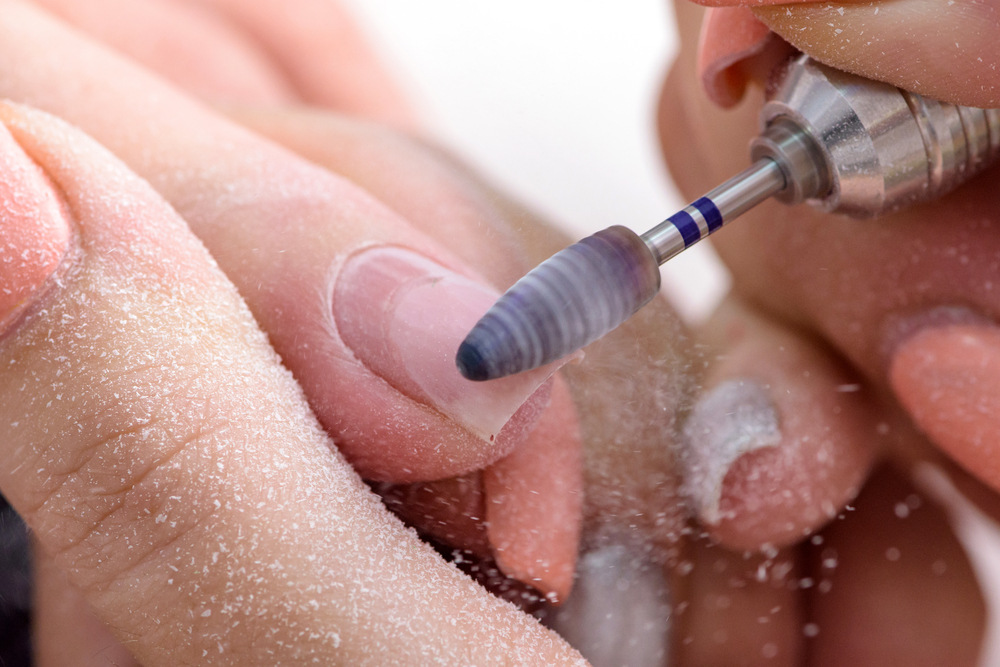
- Step 7: Shape And Buff- Use a fine-grit file or buffer to shape the nails to your desired shape and smooth out any rough edges.
- Step 8: Final Touches- Buff the fabric's surface gently to create a smooth, even surface. You can now apply regular nail polish, gel polish, or any other desired nail art to the silk wrapped nails. Finish with a topcoat for added shine and protection.

It's important to note that the application process may vary slightly depending on the specific products or techniques used. If you're new to silk wrapping, you should seek professional assistance from a nail technician experienced in silk wrap applications. They can provide guidance, ensure proper adhesion, and help you achieve the best results.
How Are Silk Nail Wraps Removed?
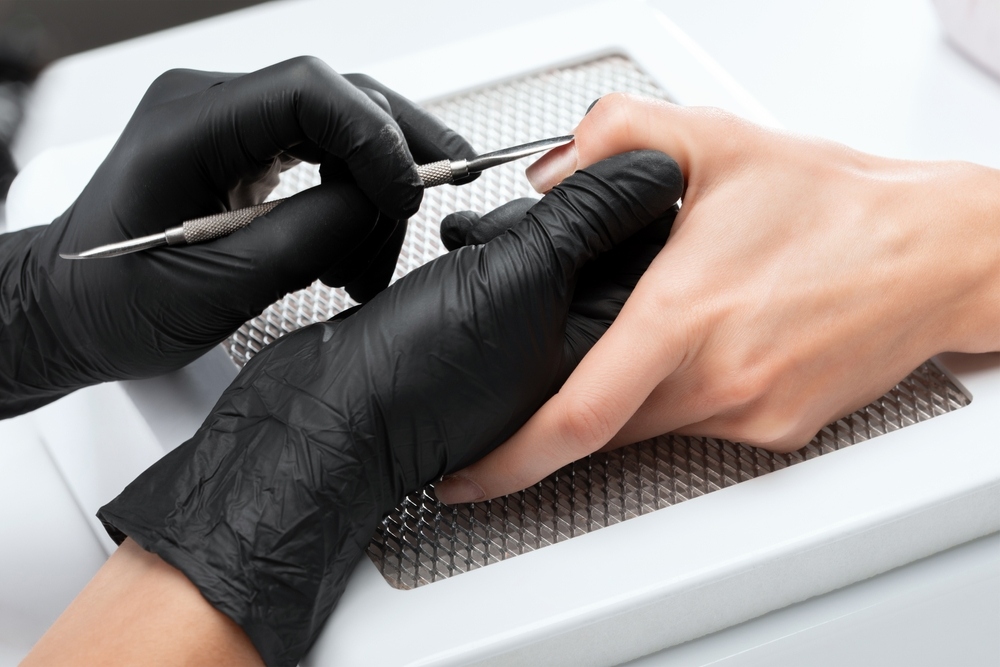
Removing silk nail wraps requires a careful process to prevent damage to the natural nails. Here's a step-by-step guide on how to remove silk nail wraps:
- Step 1: Gather Supplies- Prepare the necessary supplies, including acetone or a specialized nail wrap remover, cotton balls or pads, aluminum foil or nail wrap clips, and a cuticle pusher or orangewood stick.
- Step 2: Buff the Surface- Use a fine-grit file or buffer to buff the surface of the silk nail wraps gently. This helps to break the seal and roughen the surface, allowing the removal solution to penetrate more effectively.
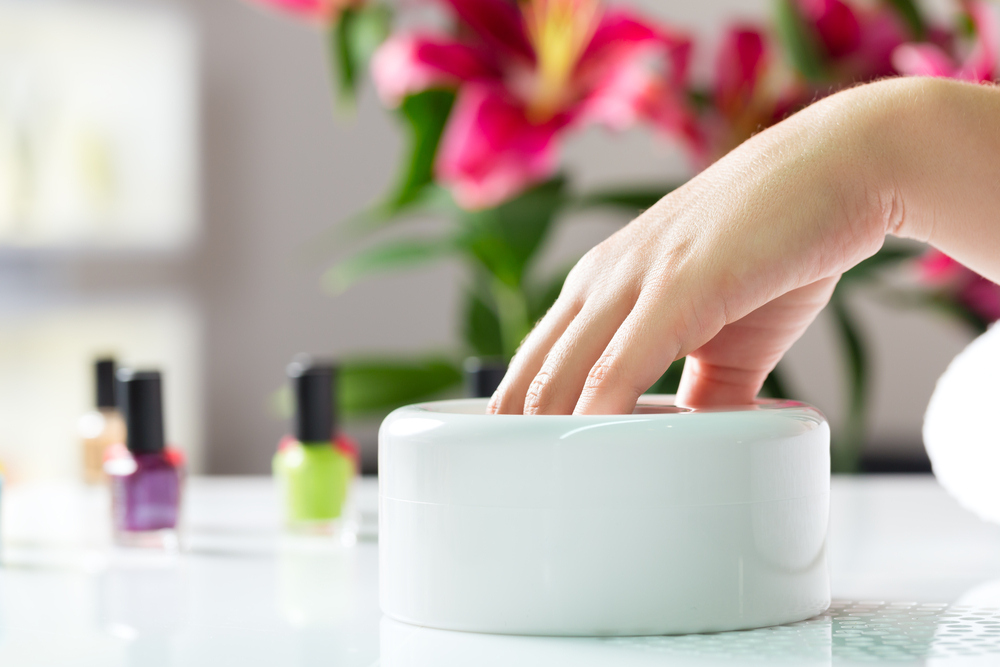
- Step 3: Soak the Wraps- Soak a cotton ball or pad in acetone or the specialized nail wrap remover. Place the soaked cotton ball on top of the silk nail wrap, ensuring it covers the entire surface.
- Step 4: Secure with Foil Or Nail Wrap Clips- Wrap each finger with aluminum foil, ensuring the cotton ball stays in place. Alternatively, you can use nail wrap clips to secure the cotton ball on each finger. This helps to maintain the acetone-soaked cotton ball in contact with the nail wrap.
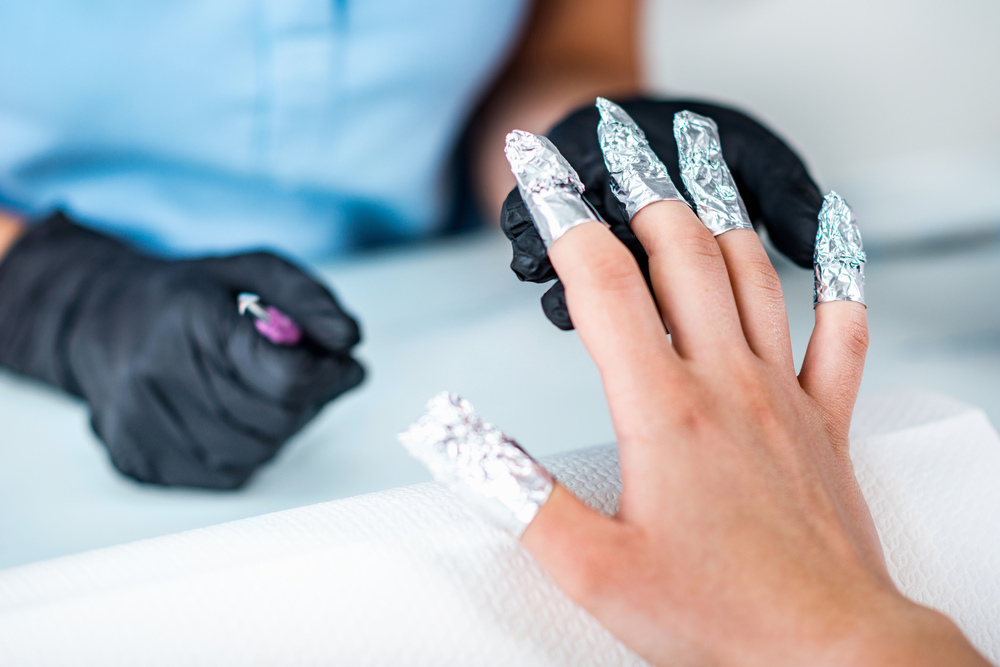
- Step 5: Wait And Let it Soak- Allow the nails to soak for approximately 10-15 minutes to loosen the adhesive and soften the silk nail wraps. You can wrap a towel around your hands to help retain heat and enhance the soaking process.
- Step 6: Gently Remove the Wraps- After the soaking period, remove one foil wrap or nail wrap clip at a time. Using a cuticle pusher or orangewood stick, gently push the softened silk nail wrap from the nail bed towards the free edge. Be careful not to force or pry the wrap, which can damage the natural nails.

- Step 7: Repeat And Clean- Repeat the removal process for each finger until all the silk nail wraps have been removed. If there are any stubborn or remaining traces of the fabric, use a gentle buffing motion to remove them further.
- Step 8: Nail Care- After removing the silk nail wraps, wash your hands with soap and water to remove any residue. Apply a nourishing cuticle oil or hand cream to moisturize and hydrate the nails and surrounding skin.

It's important to note that if you experience any discomfort or difficulty during the removal process, you should seek professional assistance from a nail technician. They have the expertise and tools to safely and effectively remove silk nail wraps while minimizing potential damage to the natural nails.
How Long Do Silk Wrap Nails Last?
The longevity of silk wrap nails can vary depending on several factors, including the quality of the application, daily activities, and individual nail care habits. On average, silk-wrap nails can last between two to four weeks. However, it's important to note that the fabric itself may not be the main determining factor for the longevity of the nail enhancement. Instead, it's primarily influenced by the adhesive bonding of the silk wrap to the natural nails. Proper maintenance and care can help extend the lifespan of silk-wrap nails. Here are some tips to maximize their durability:

- Avoid Excessive Moisture And Harsh Chemicals: Limit exposure to water, harsh cleaning agents, and chemicals as they can weaken the adhesive and cause lifting or premature wear of the silk wraps. Wear protective gloves when engaging in prolonged water exposure or exposure to chemicals.
- Be Gentle with Nails: Avoid using your nails as tools to open packages or perform tasks that may put excessive pressure or stress on them. This can lead to chipping, cracking, or lifting the silk wraps.
- Regular Maintenance: Inspect the silk wraps regularly for any signs of lifting, chipping, or damage. If you notice any issues, consider scheduling a touch-up or repair with a professional nail technician.
- Moisturize Nails And Cuticles: Keeping your nails and cuticles moisturized can help maintain the health and flexibility of the natural nails. Apply cuticle oil or a moisturizing cream regularly to nourish and hydrate the nail area.
- Gentle Nail Care Routine: When filing or shaping the nails, use a soft touch and avoid excessive force or rough filing, which can weaken or damage the silk wraps.
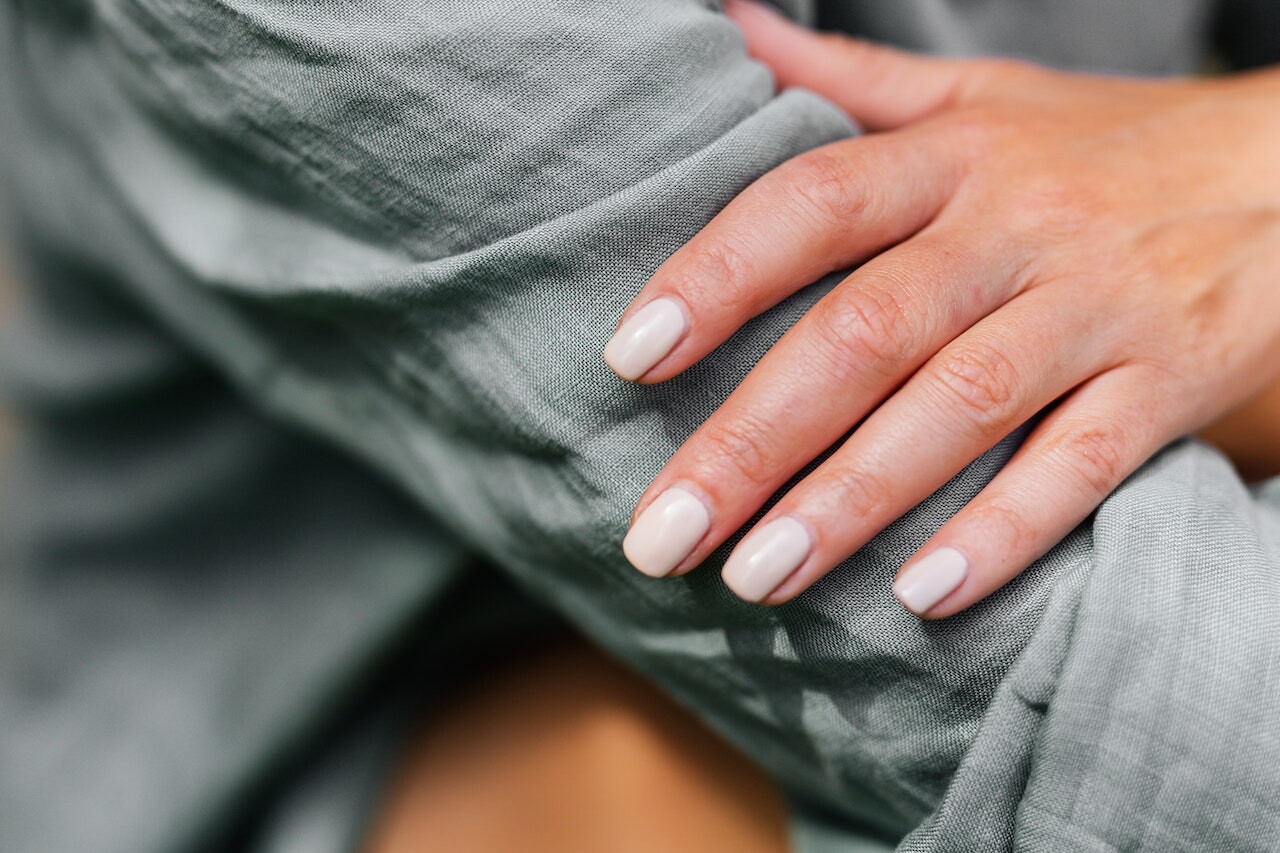
Remember that everyone's nails grow at different rates, so that you may notice some visible regrowth near the cuticle area after a couple of weeks. At this point, you may need to consider a maintenance appointment with a nail technician to fill in the regrowth area and maintain the desired appearance. It's worth noting that proper removal of silk wraps is crucial to maintaining the health of the natural nails. Avoid forcefully peeling or picking at the silk wraps, as this can cause damage. Instead, have them professionally removed or follow a careful removal process using appropriate techniques and products. Overall, with proper care and maintenance, silk-wrap nails can last for several weeks, providing you with durable and natural-looking nail enhancements.
How Do I Care for My Silk Wrap Nails?
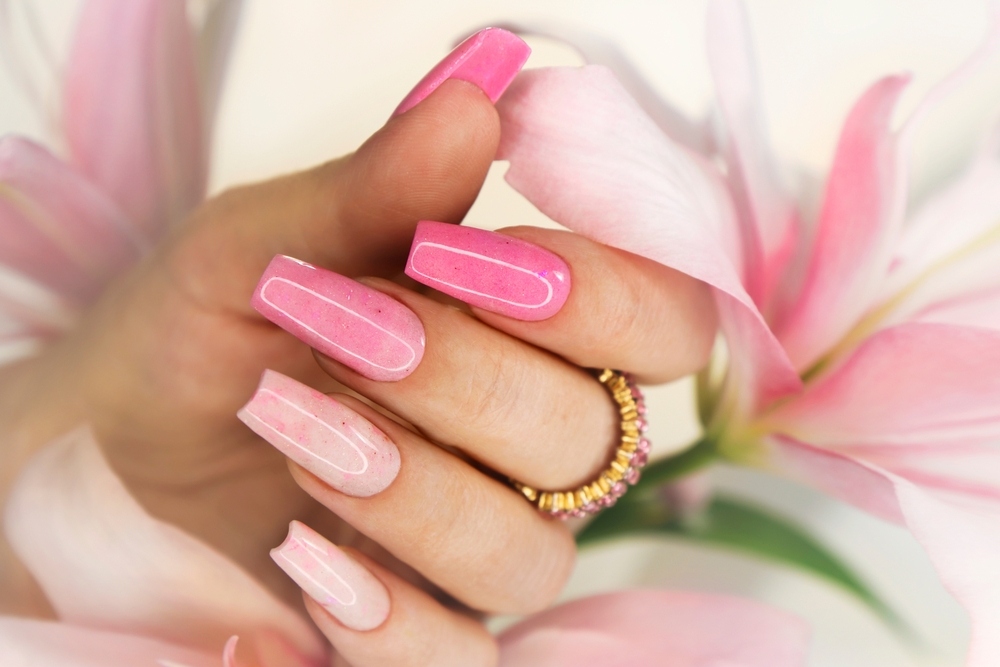
Caring for your silk wrap nails is essential to maintain their appearance and prolong their durability. Here are some tips on how to care for your silk wrap nails:
- Avoid Excessive Moisture: Limit prolonged exposure to water, as it can weaken the adhesive used to bond the silk wraps to the natural nails. When washing dishes or engaging in water-related activities, consider wearing protective gloves to minimize water contact.
- Be Gentle with Nails: Treat your silk wrap nails carefully and avoid using them as tools for opening packages, scratching, or performing tasks that may put excessive pressure or stress on the nails. This helps prevent chipping, cracking, or lifting of the silk wraps.

- Moisturize Nails And Cuticles: Keep your nails and cuticles moisturized to maintain health and flexibility. Apply cuticle oil or a moisturizing cream regularly to nourish and hydrate the nail area. This can help prevent dryness, splitting, and damage to the natural nails.
- Regular Maintenance: Inspect your silk wrap nails for signs of lifting, chipping, or damage. If you notice any issues, it's recommended to schedule a touch-up or repair with a professional nail technician. They can address any concerns and ensure that your silk wraps remain intact.
- Gentle Nail Care Routine: When filing or shaping your nails, use a soft touch and avoid excessive force or rough filing, which can weaken or damage the silk wraps. Opt for a fine-grit file or buffer to maintain the shape and smoothness of your nails.
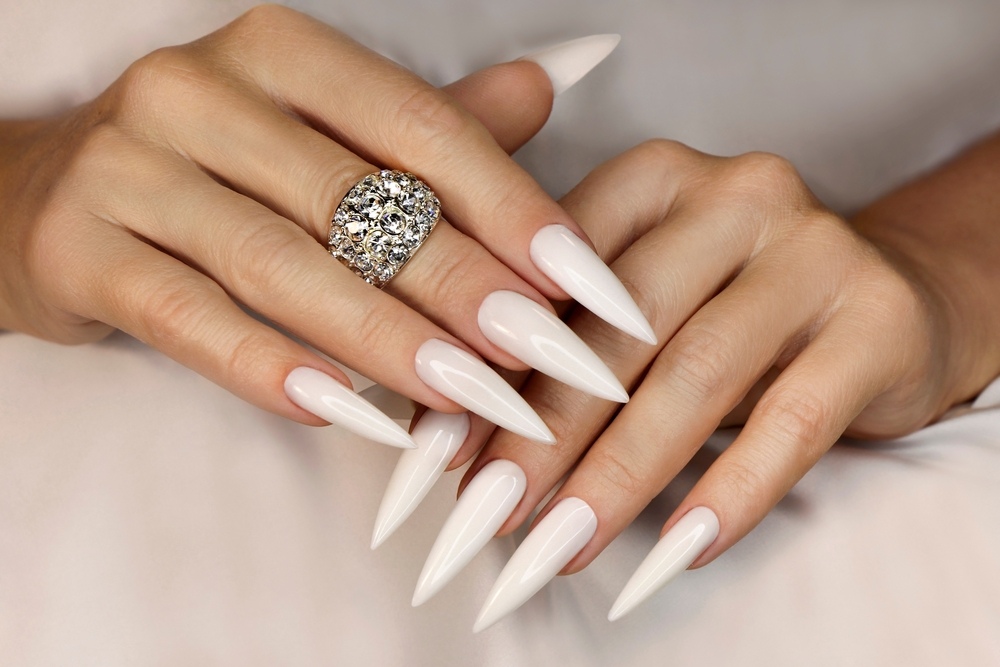
- Avoid Harsh Chemicals: Minimize exposure to harsh chemicals, including household cleaning agents and acetone-based nail polish removers. These can potentially weaken the adhesive or cause damage to the silk wraps. If you need to use such products, consider wearing gloves or using non-acetone removers that are gentler on the nails.
- Protect Nail Tips: Protect the tips of your silk wrap nails, as they are more prone to chipping or catching on surfaces. You can apply an extra layer of topcoat to the tips to provide additional reinforcement and protection.
- Proper Removal: When it's time to remove the silk wraps, avoid forcefully peeling or picking them off, as this can cause damage to the natural nails. Instead, follow a careful removal process using appropriate techniques and products, such as soaking the nails in acetone or using a specialized nail wrap remover. If you're unsure or uncomfortable with the removal process, it's best to seek professional assistance.
By following these care tips, you can maintain the beauty and longevity of your silk-wrap nails, keeping them looking their best for an extended period. Additionally, consulting with a professional nail technician can provide personalized guidance and advice based on your specific nail condition and lifestyle.
How Much Do Silk Wrap Nails Cost?

The cost of silk wrap nails can vary depending on several factors, including the location, the salon or nail technician, and any additional services or customizations. Generally, silk-wrap nails are $30 to $60 or more.
Here are some factors that can influence the cost:
- Salon Reputation And Location: High-end salons in popular or upscale areas may charge higher prices for their services compared to smaller or less prominent establishments.
- Nail Technician Experience: Highly experienced nail technicians or specialists who have mastered the silk wrap technique may charge higher rates for their expertise.

- Additional Services: If you add extra services such as nail art, gel polish, or custom designs to your silk wrap nails, the price may increase accordingly.
- Maintenance And Refills: If you opt for regular maintenance and refills to keep your silk-wrap nails looking their best, additional costs may be associated with these touch-up appointments.
It's recommended to inquire about the specific pricing at your chosen salon or nail technician before booking an appointment. They can provide an accurate quote based on their pricing structure and any additional services you may require. Remember, investing in quality and skilled professionals is crucial for obtaining desirable results and ensuring the health and longevity of your silk-wrap nails.
Conclusion
In conclusion, silk wrap nails are a popular choice for those seeking to reinforce and enhance their natural nails. They offer several benefits, such as added strength, flexibility, and a natural-looking appearance. Silk wraps can be applied by professionals using a precise process involving the application of a silk or fiberglass fabric and a specialized adhesive. While silk-wrap nails have advantages, there are some potential disadvantages to consider. These include the need for professional application, the possibility of fabric fraying or lifting over time, and the requirement for regular maintenance and touch-ups. Whether you choose silk wrap nails or another nail enhancement option, consulting with a professional nail technician is recommended to ensure the best results and maintain the health and beauty of your nails.
ALSO READ: 15 Best Nail Polish Strips And Stickers for a Salon-Style Manicure





 JOIN OUR WHATSAPP CHANNEL
JOIN OUR WHATSAPP CHANNEL













































